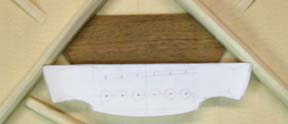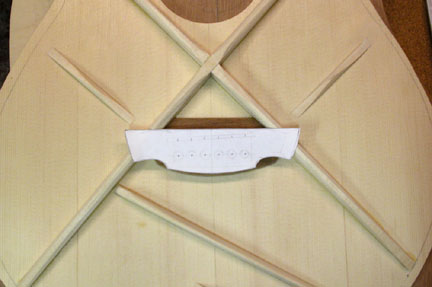Wade,
With me plans are what you make not what you follow

Golden principles still apply. You have usually a scale length and how many frets clear of the body in mind. This immidiately tells you where the bridge must be on the centre line down the guitar. If you are doing a pinned bridge, then it's a good idea to have the X braces going through the bridge wings with enough space for the bridge pins - so you would have to have an idea of the saddle string spacing you are going for. Then you probably have in mind the angle you want the X braces to make, so given the string spacing this will largely dictate where the centre of the X will be.
Then you can start to see what body shape will work around this - with lower bout, upper bout and waist width that you have in mind - where the soundhole will have to be (depending on the size of soundhole you want) and how the top arms of the X's fit with your upper bout bracing pattern and neckblock design. Assuming this all works then you can look at the bracing in the lower part of the X and any finger braces plus any soundhole re-enforcement you may do.
If it doesn't quite hang together adjust and iterate around until it works for you - functionally and aesthetically . . . or not as the case may be.
To me this is all part of the fun of designing and discovering guitars and what they can do. I've never ever built from a set plan (other than those that I draw out first using loosely the process outlined above).
Hope this answers some of your questions but probably will prompt a lot more

 SWEEEEEET
SWEEEEEET 
